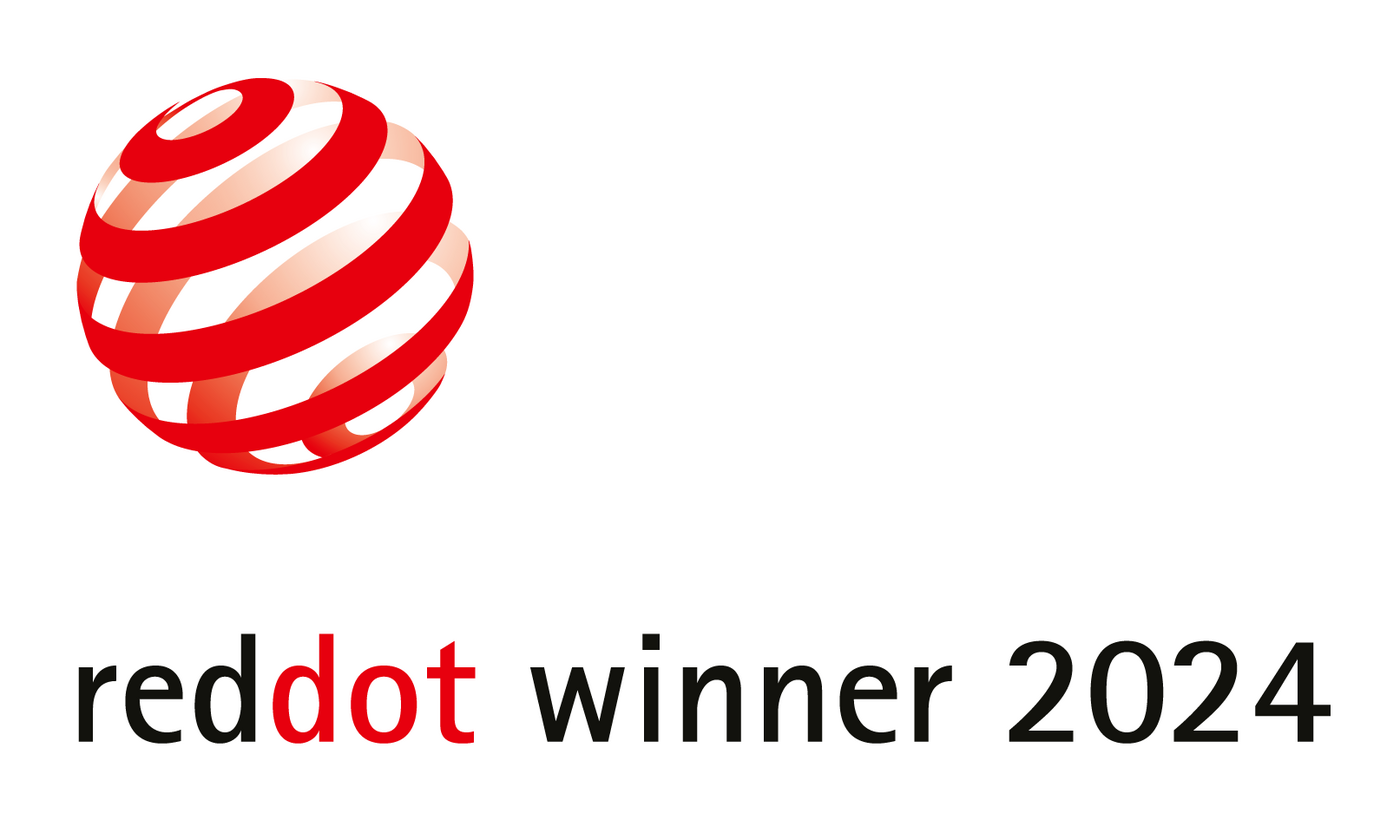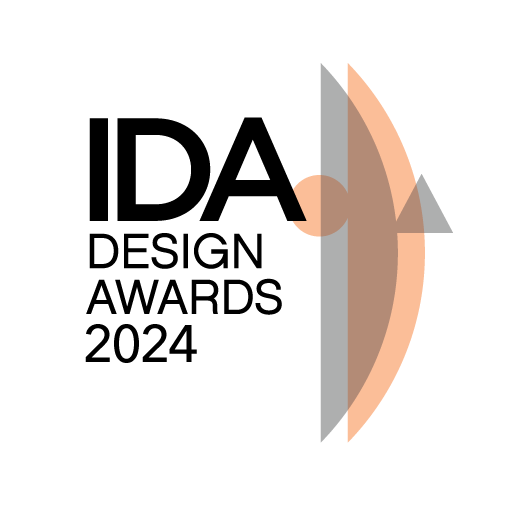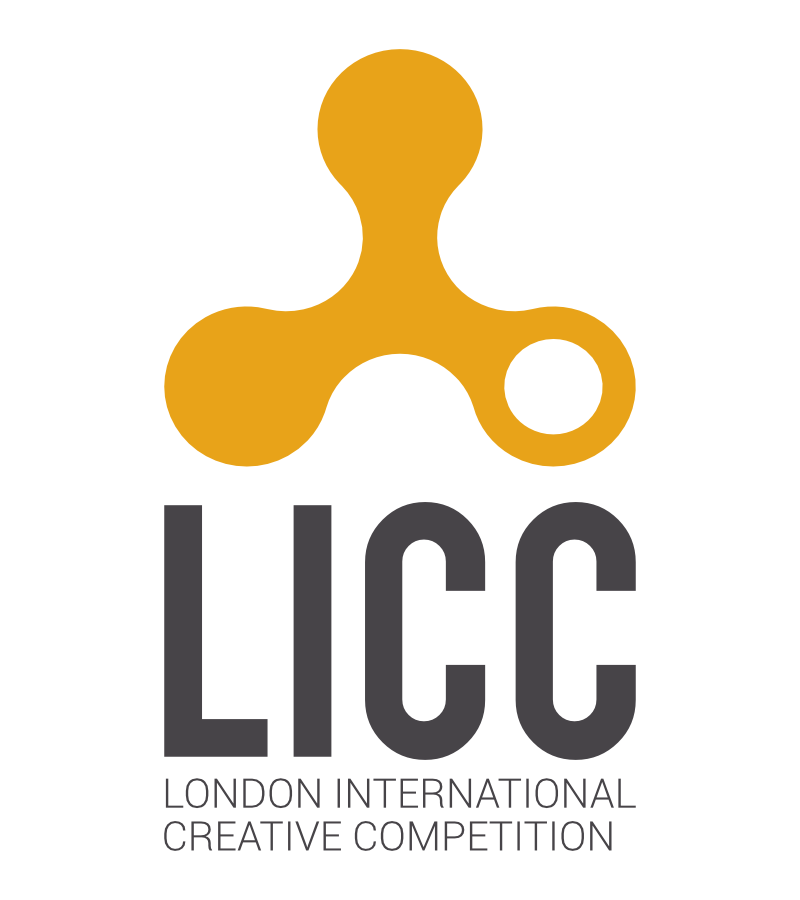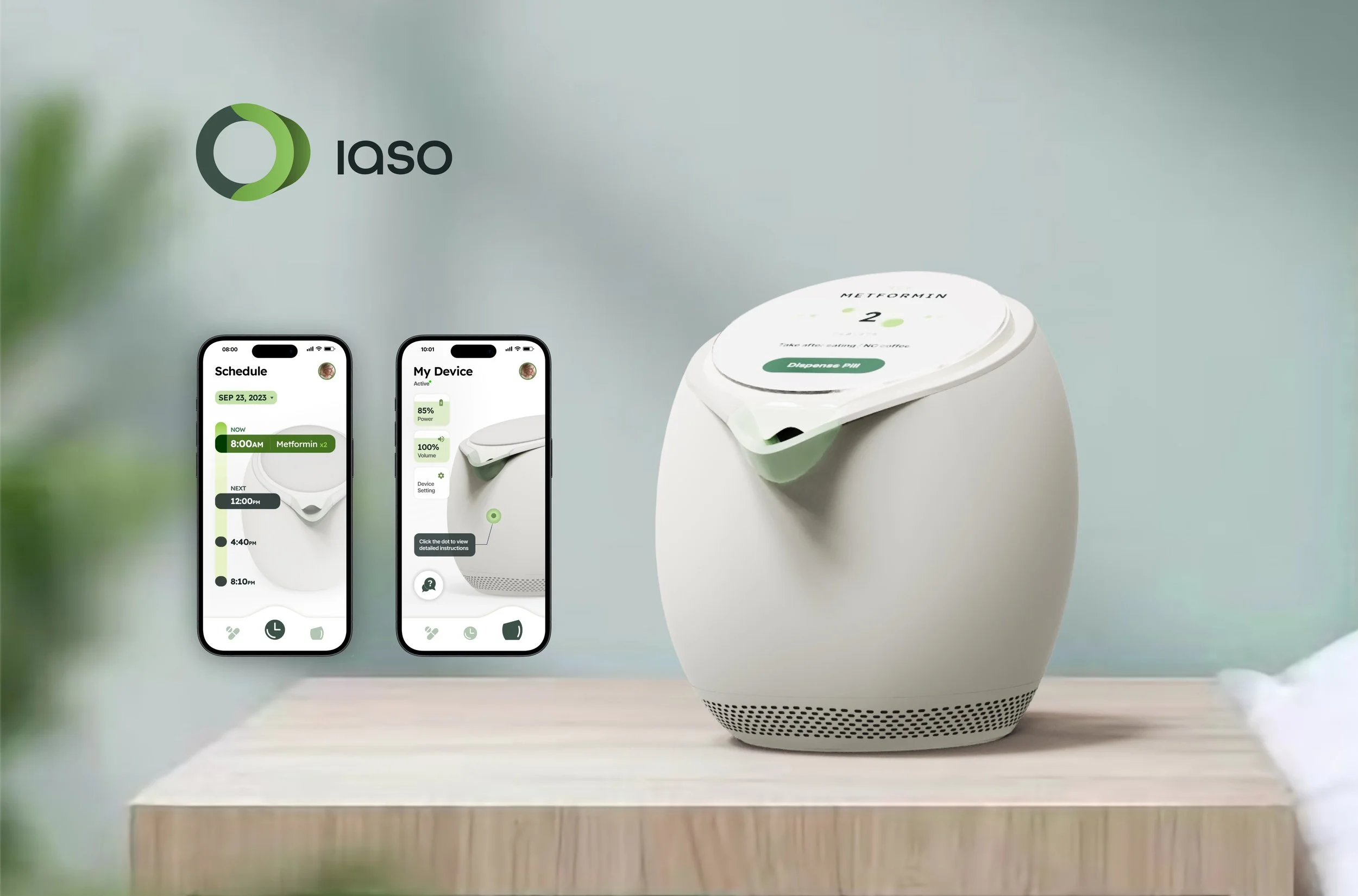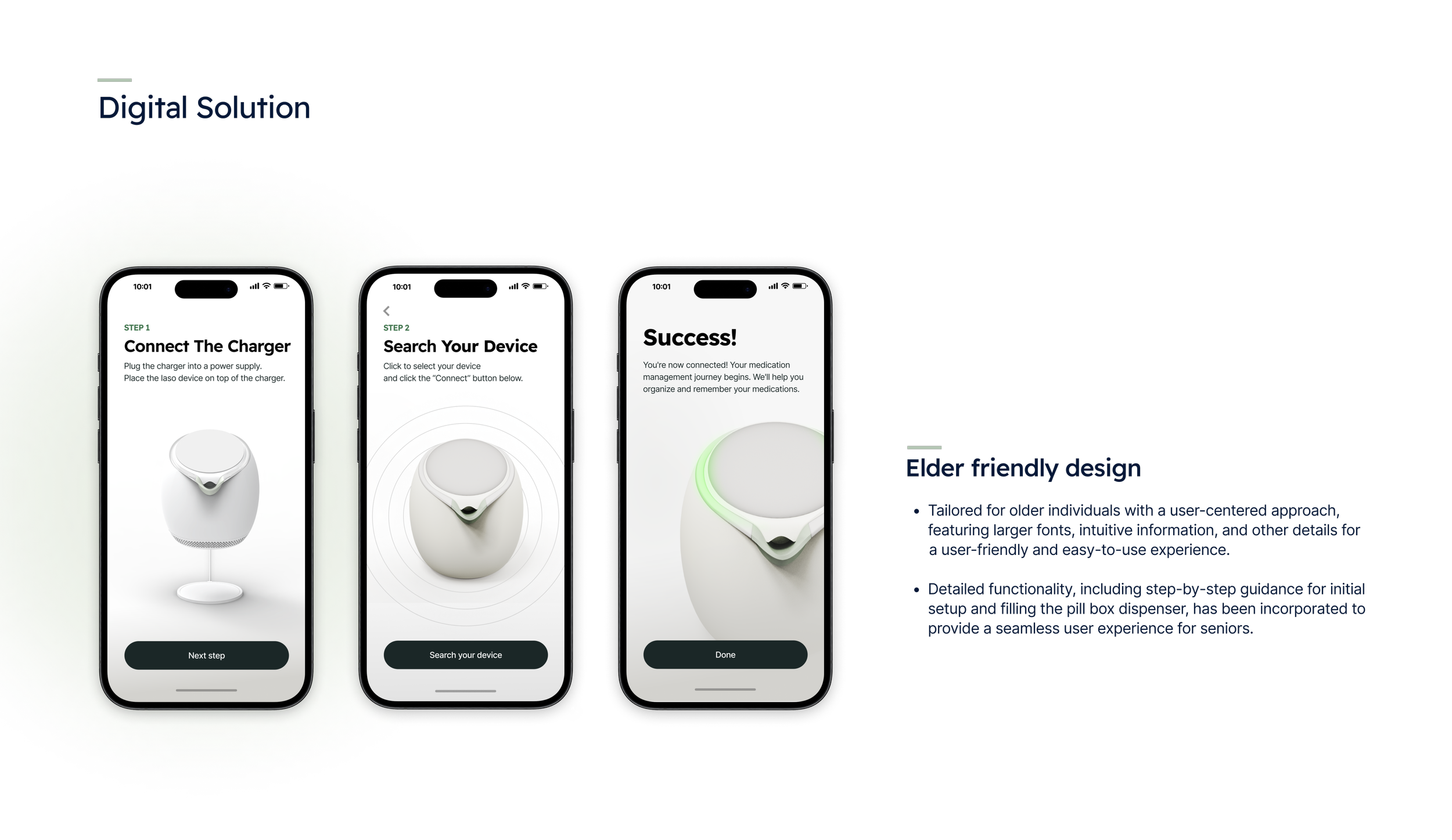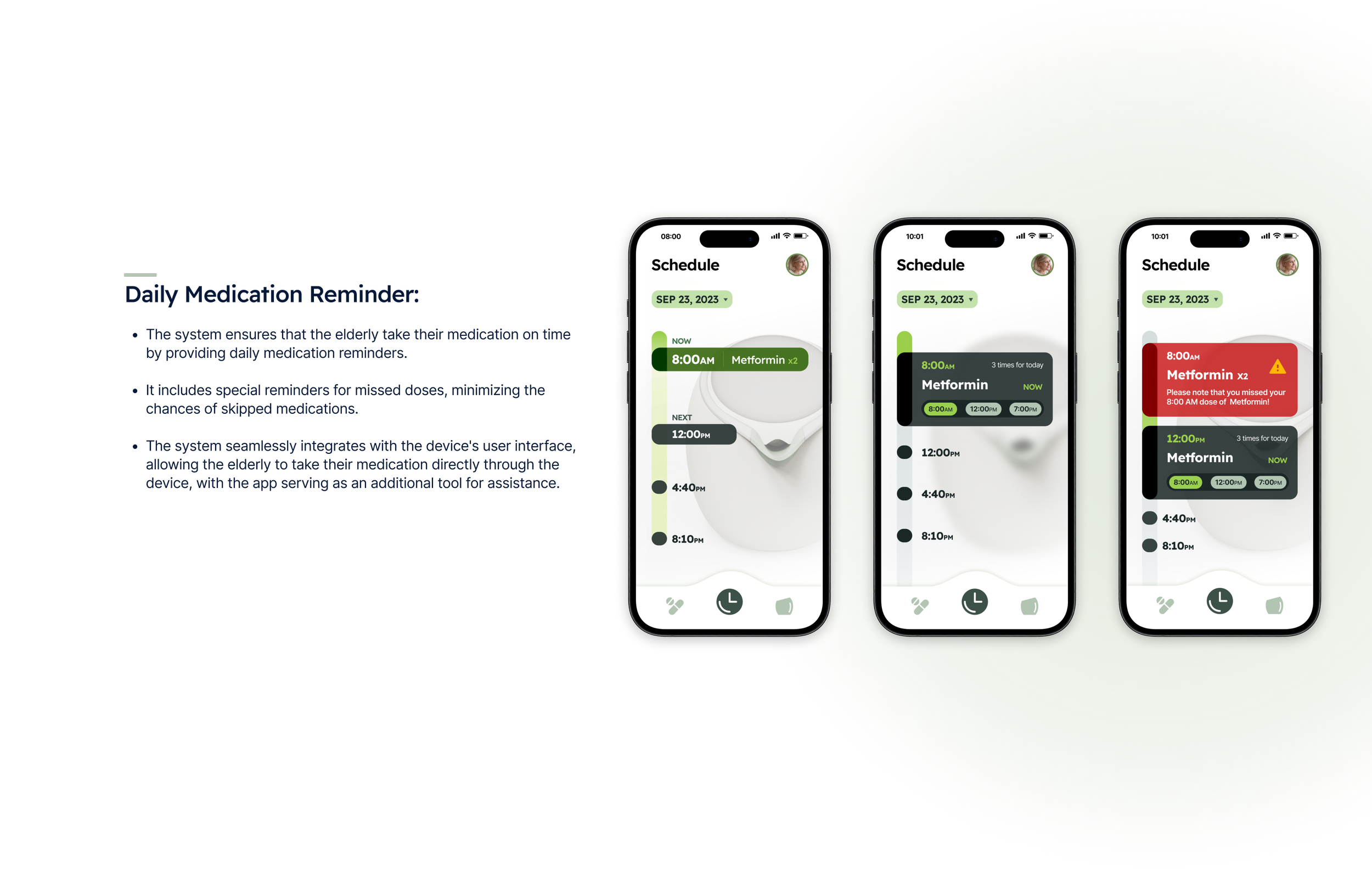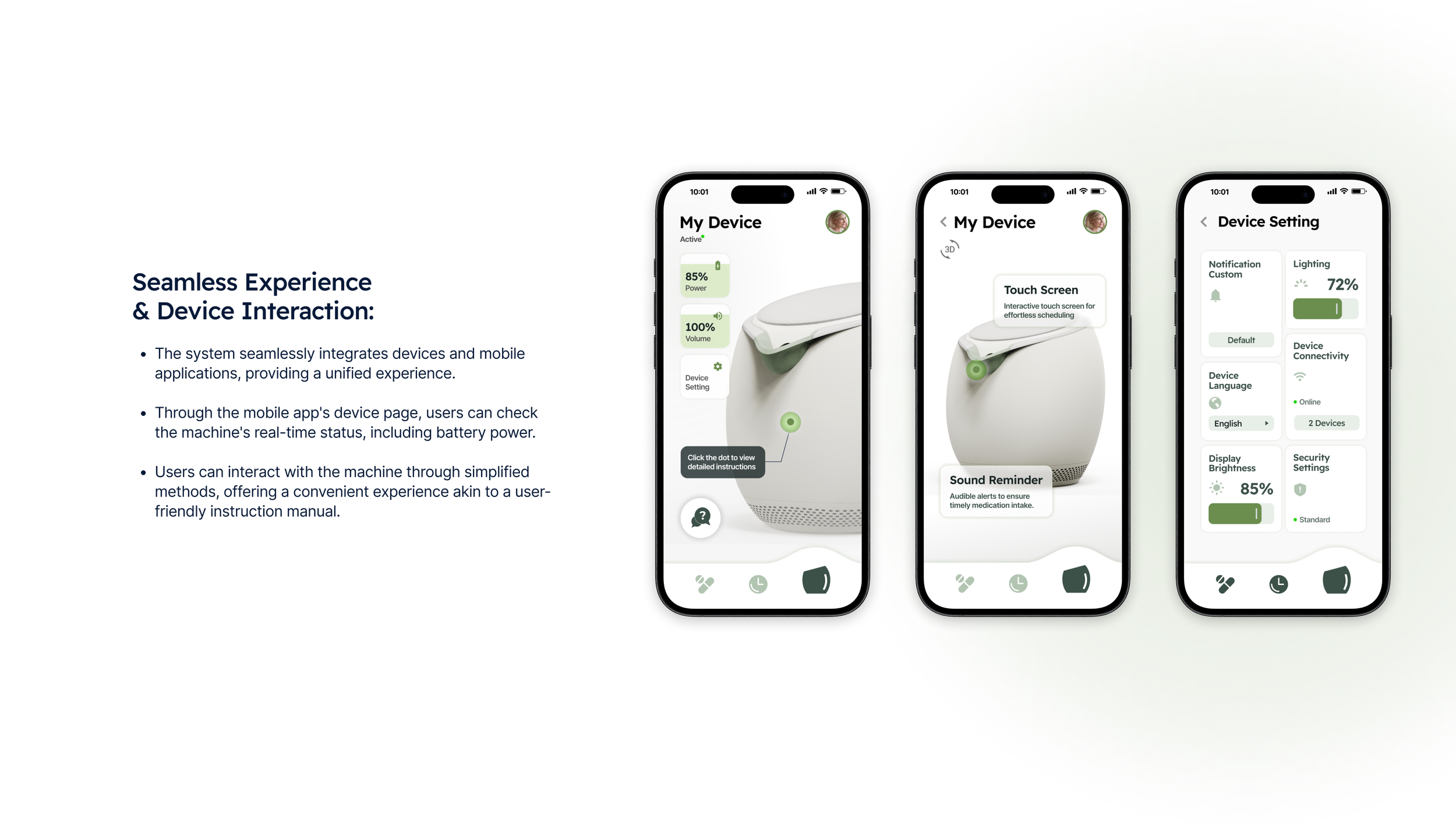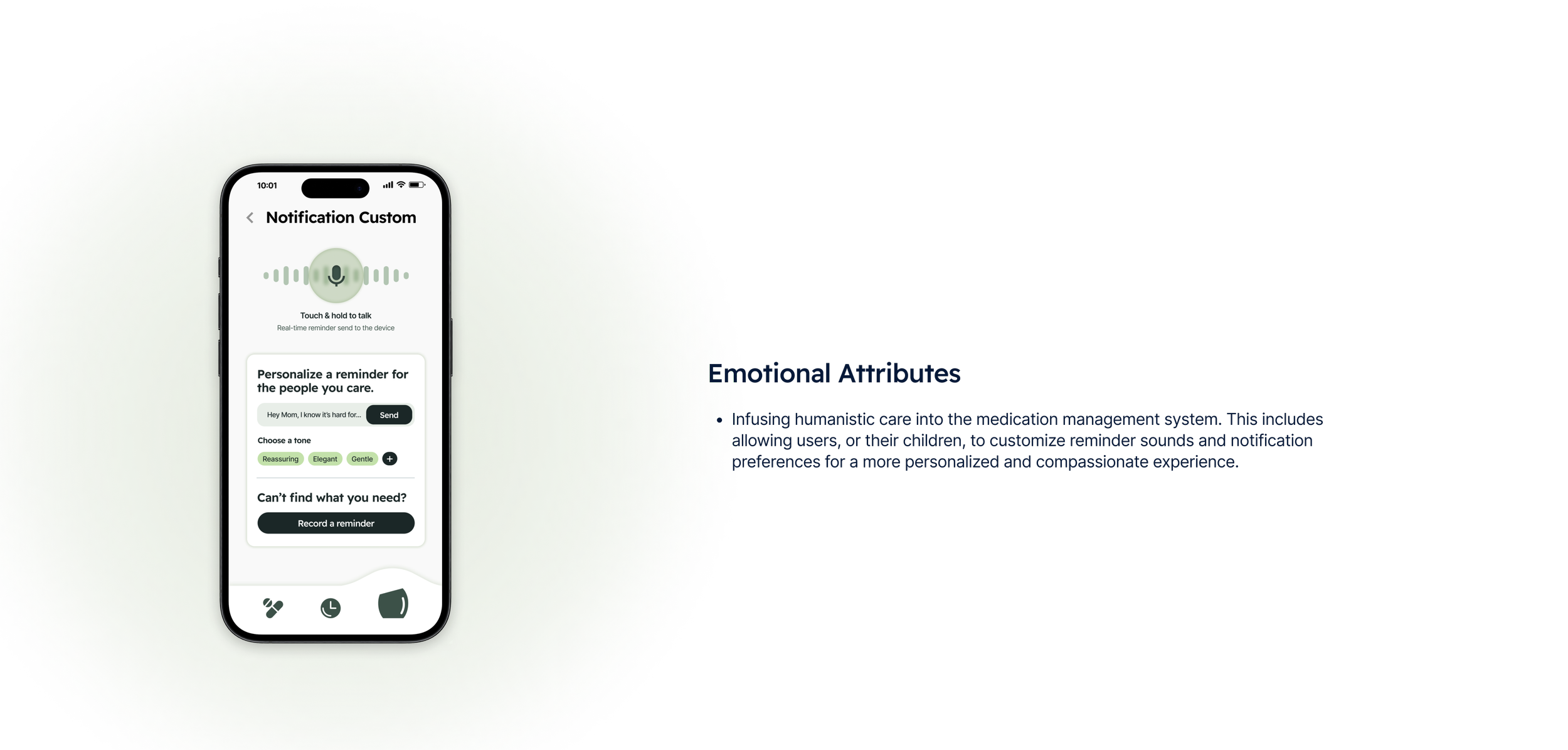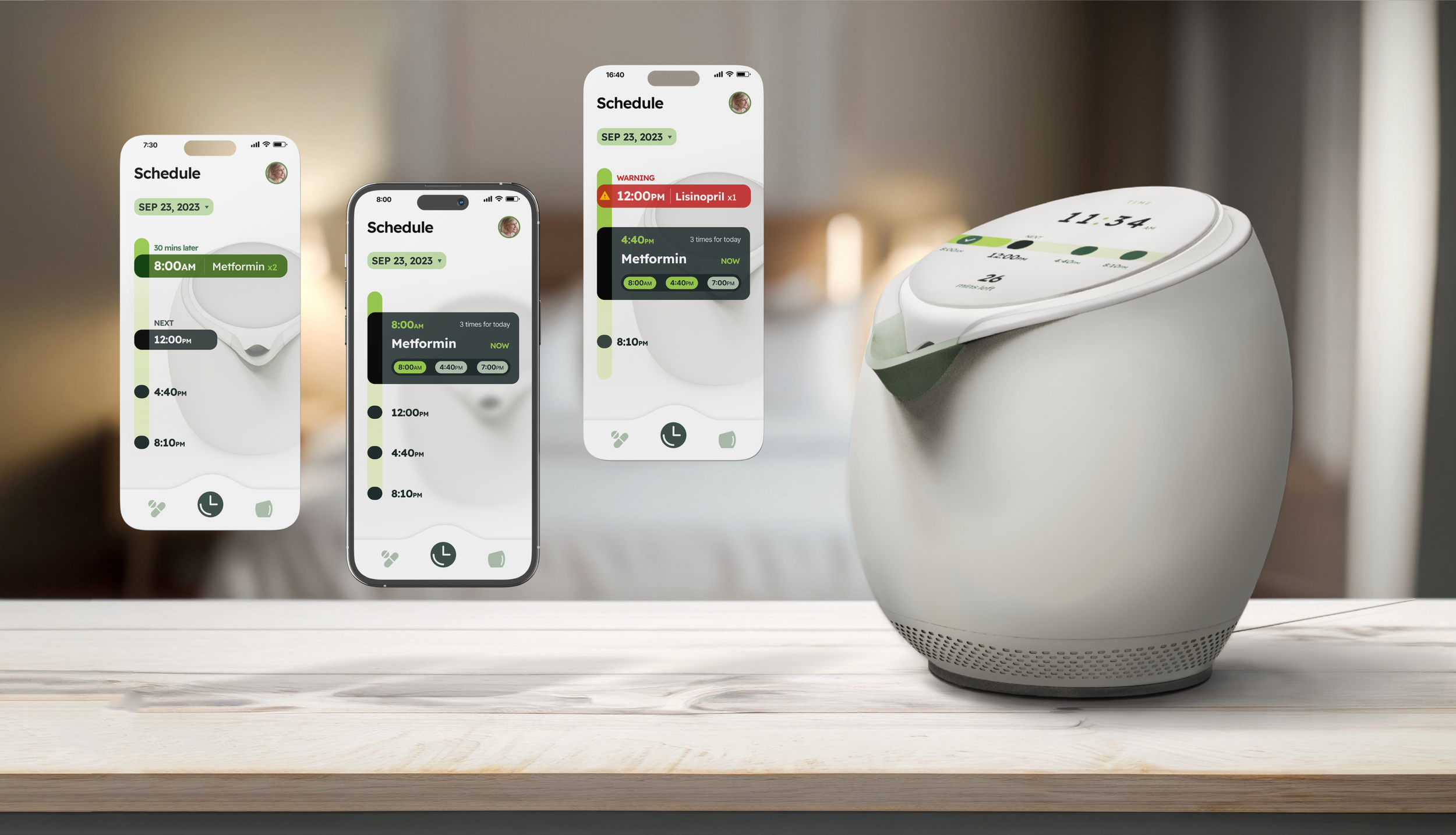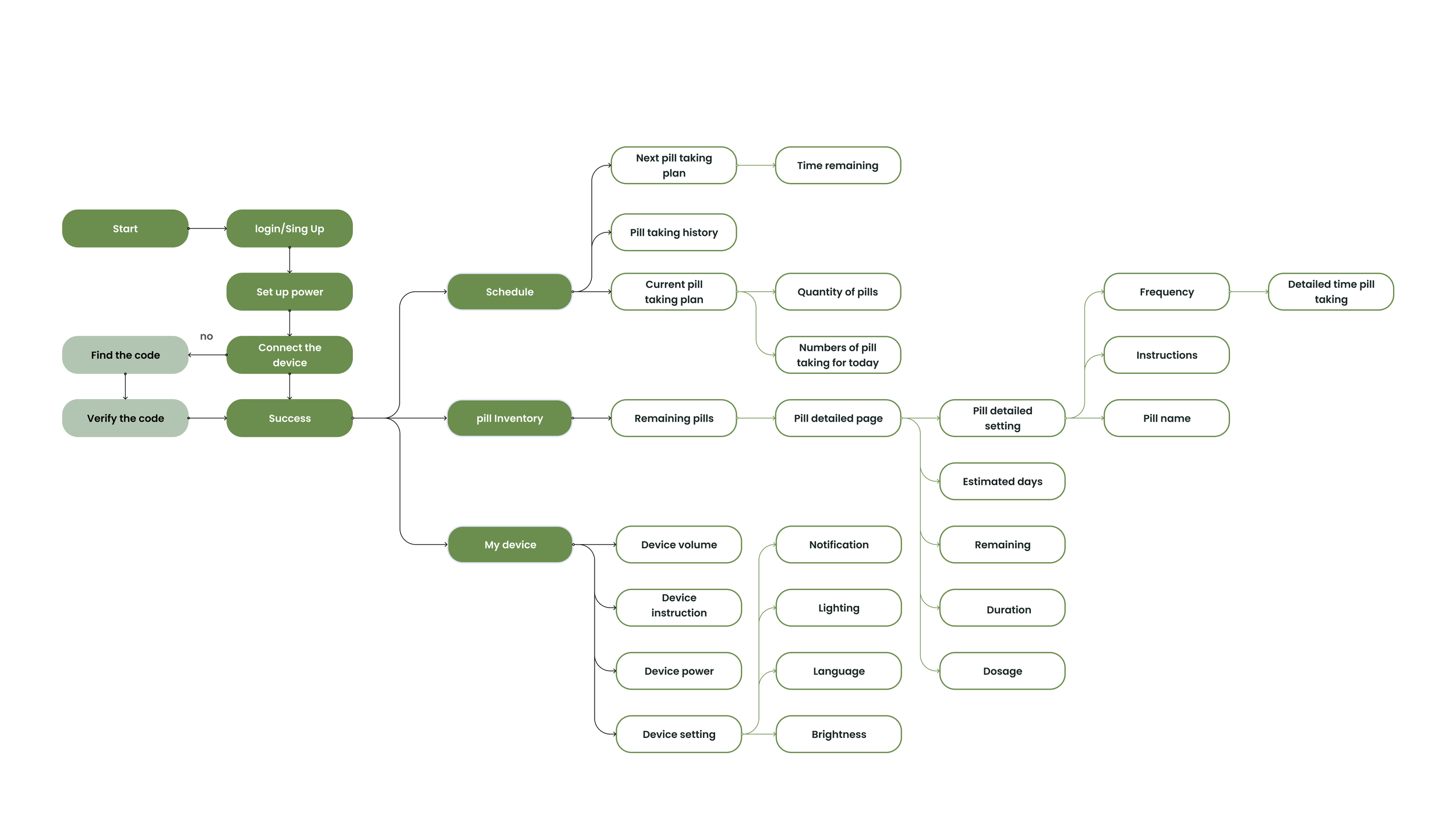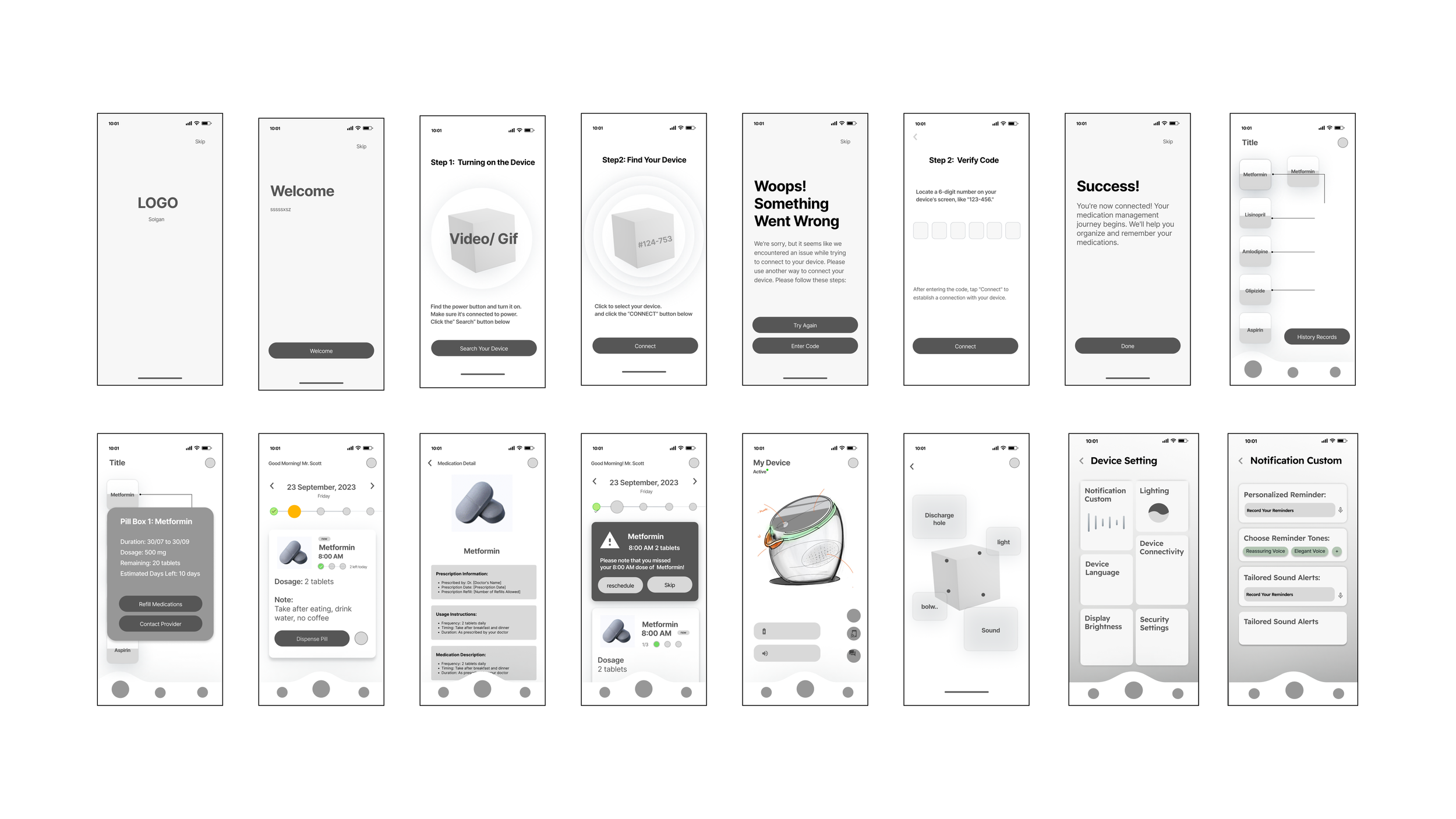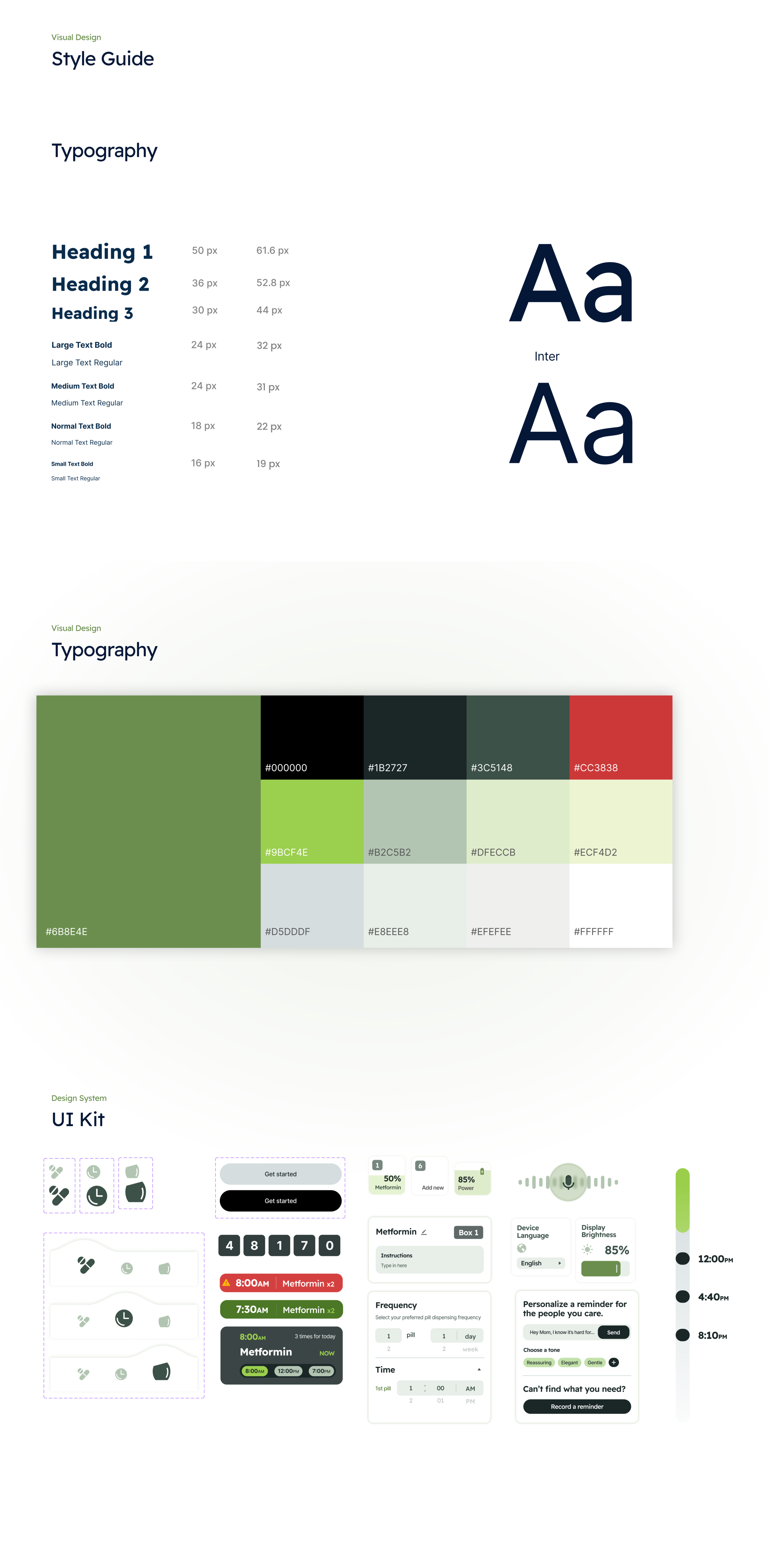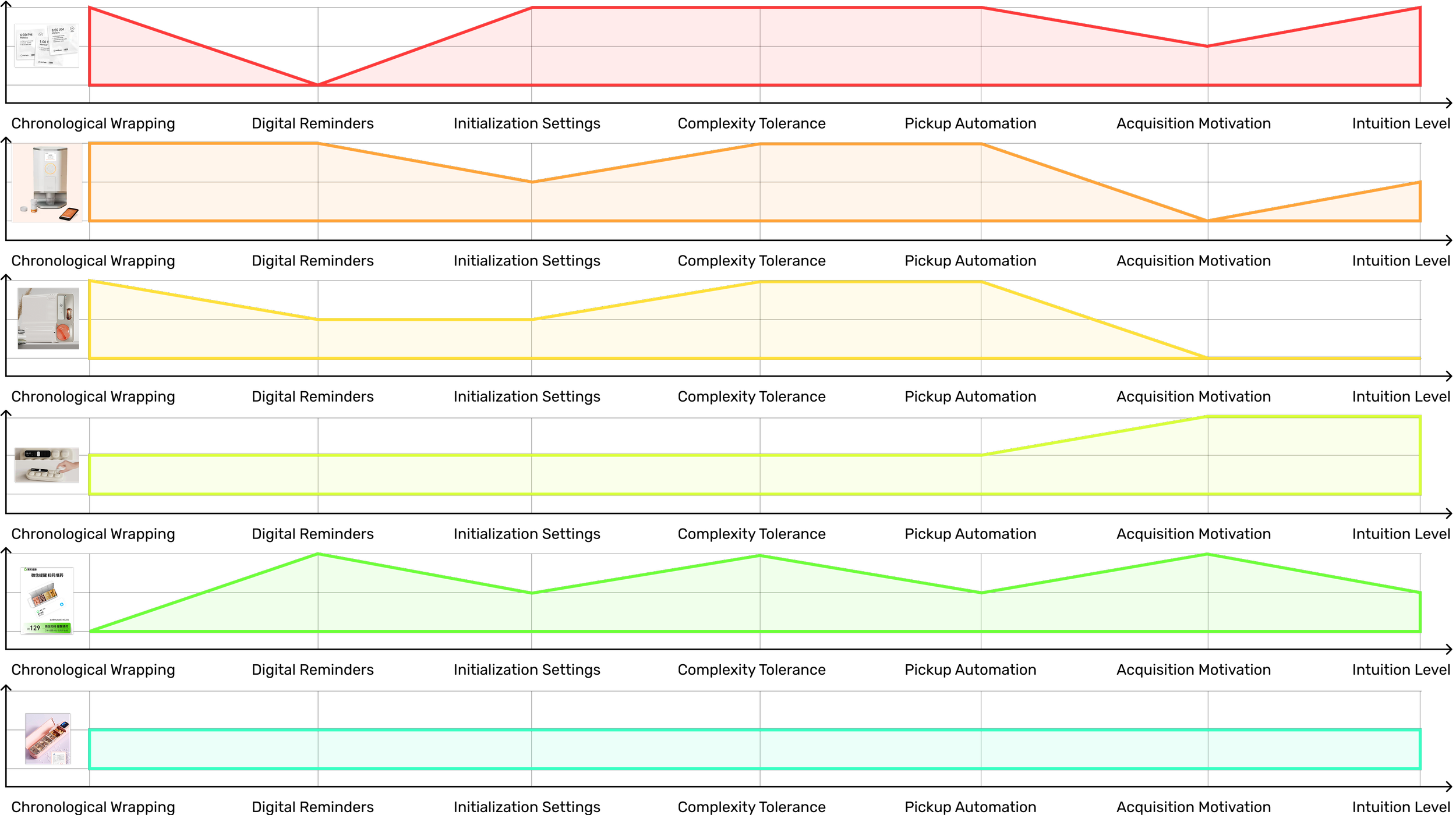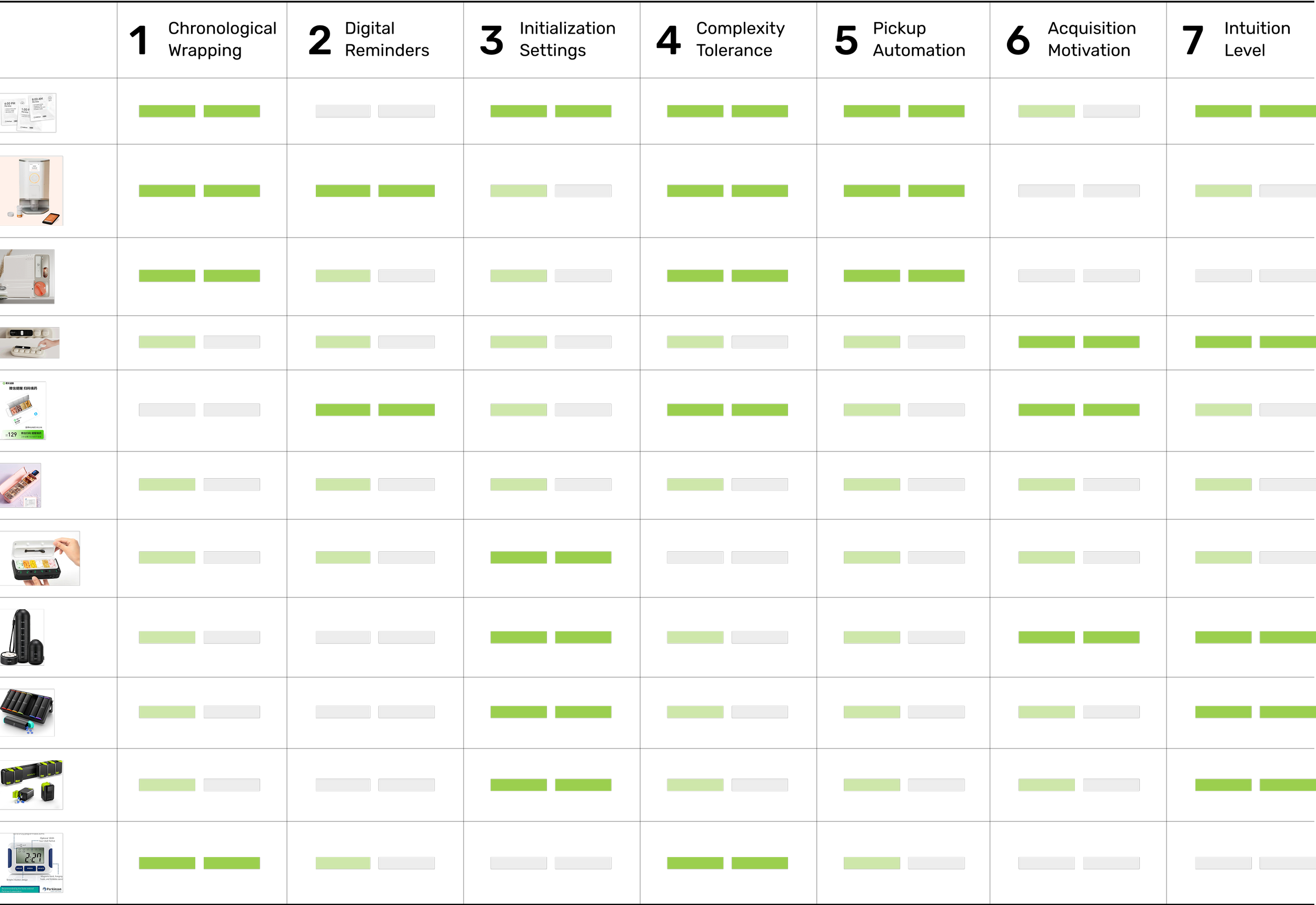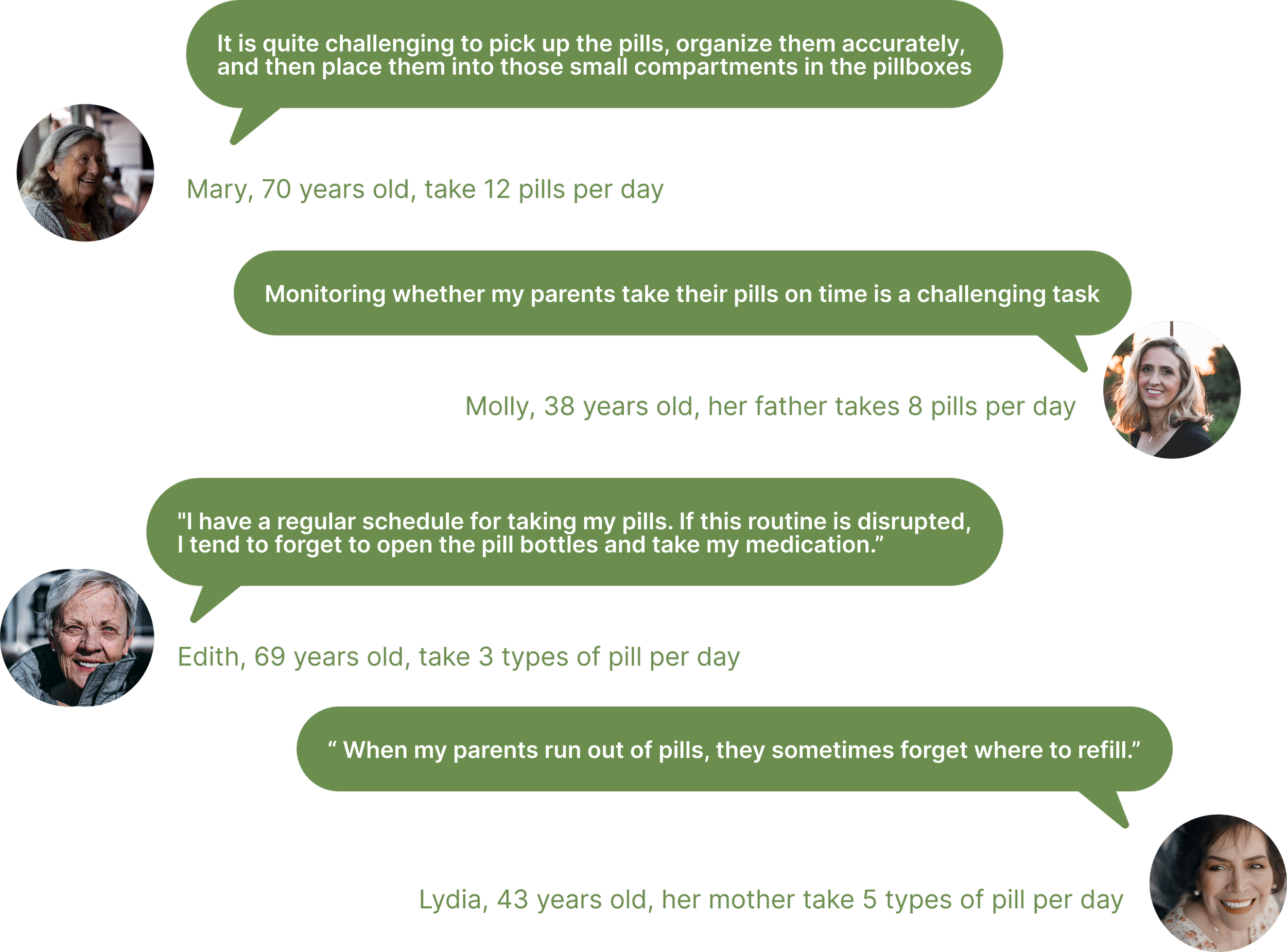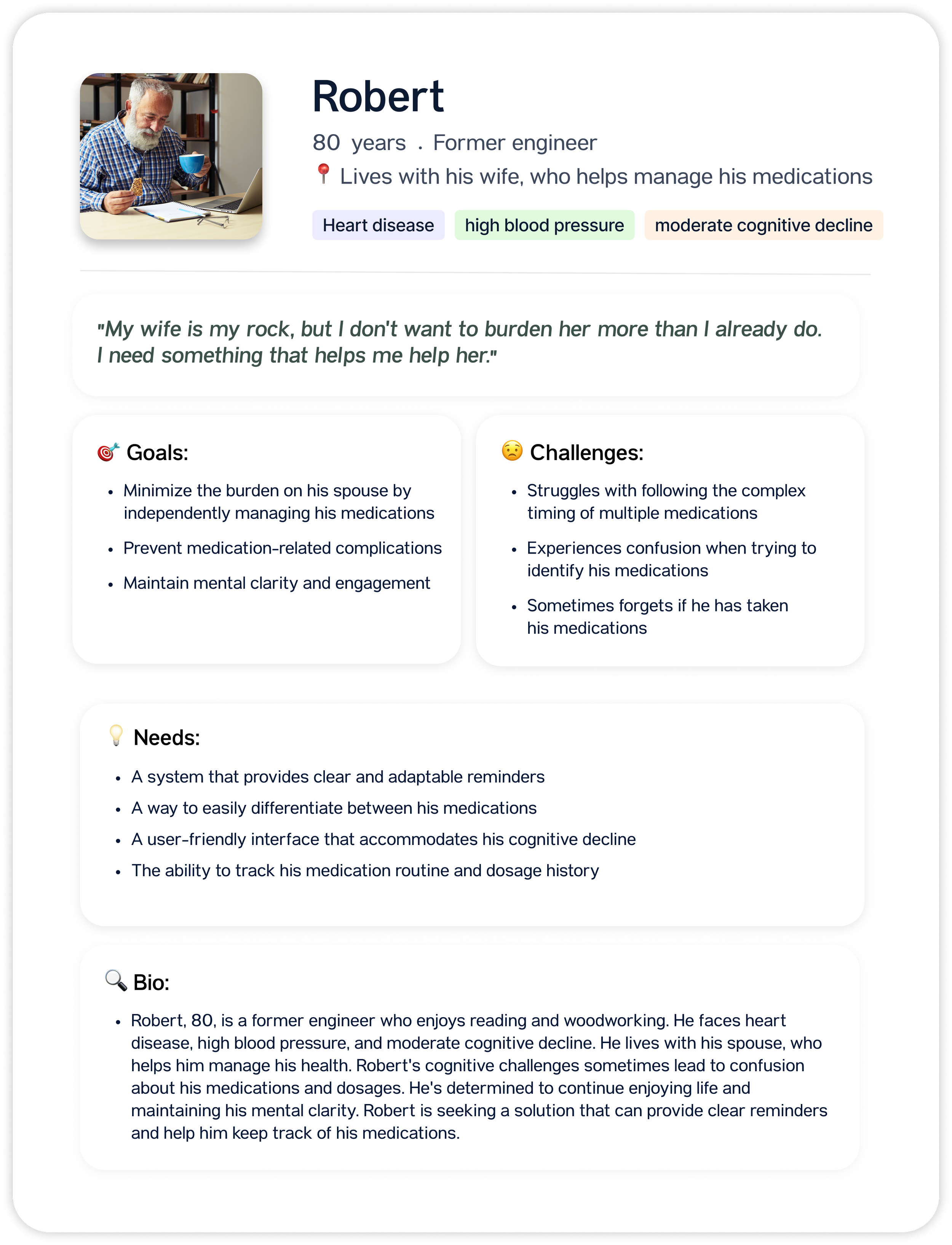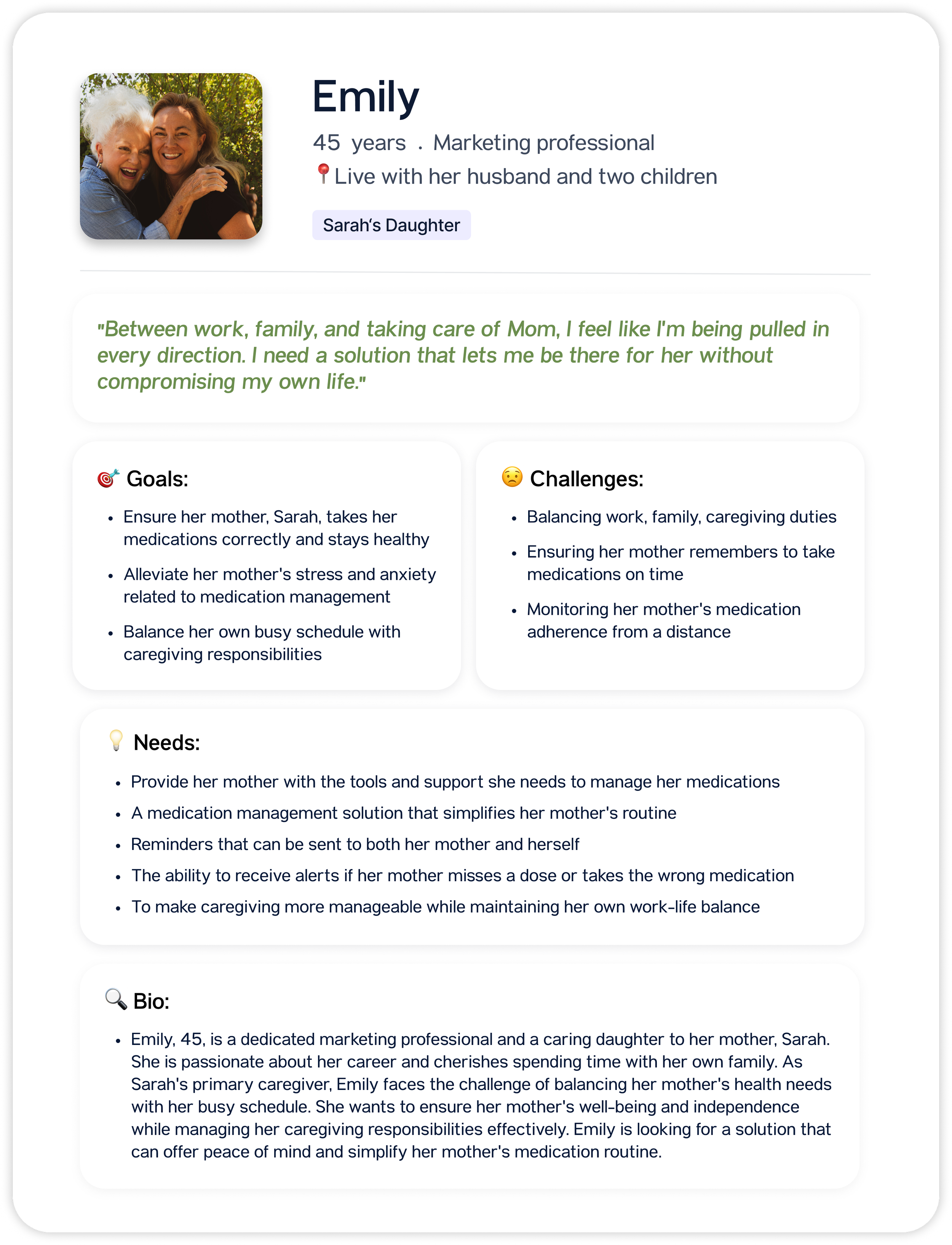Iaso, Home Health Starts Here
Iaso — a comprehensive medication management system tailored for older adults facing memory impairment and multiple chronic conditions. By seamlessly uniting devices and mobile interfaces, Iaso streamlines the complexities of medication management, reducing the risk of missed doses and medication mix-ups. It's a holistic solution for enhanced well-being in older adults.
Winning award
-
To C, App Design, Product Design
-
💡 Ideation & Concept Development – Originated the project idea, defining the vision and strategic direction.
🤝 Cross-Functional Collaboration – Worked closely with service designers, UI/UX designers, industrial designers, developers, and researchers to ensure a seamless design process.
🔍 User Research & Pain Point Analysis – Conducted in-depth user research to uncover core pain points and refine design solutions.
🔗 Service & System Design – Developed a structured service line and system design to optimize interactions between the device, UI, and users.
🖌️ UX/UI Design & Prototyping – Designed intuitive interactions tailored for both seniors and caregivers, ensuring usability and accessibility.
-
Figma, Miro, Rhino, Keyshot, Adobe After Effect
Complex Medication Management – Seniors with chronic conditions like heart disease, high blood pressure, and diabetes struggle with intricate medication schedules due to cognitive decline.
⚠️ Key Issues:
⚠️ Missed or incorrect dosages, leading to health complications.
⚠️ Increased hospitalizations and heightened health risks.
⚠️ Greater dependency on caregivers, adding to their burden.
User Flow
Ideation & Design - User Flow
🎯Goal:
Simplified Onboarding - Enable elderly users to independently set up the device with a straightforward, easy-to-follow onboarding process.
Clear Information Presentation - Present all necessary information clearly and concisely while minimizing page jumps and reducing complex interactions.
Intuitive Family Supervision - Design a family supervision mode that is easy for caregivers to use, allowing them to monitor and assist without overwhelming the elderly user.
Balanced Functionality and Interface - Integrate essential functionalities within a clean, uncluttered interface to prevent cognitive overload for senior users.
Customizable Yet Simple Settings - Incorporate customizable options (e.g., reminder preferences) that remain simple and easy to navigate, ensuring accessibility for elderly users.
Project Background & Market Scale
Problem & Challenge
Aging Population Challenge – As society ages, medication management for seniors with memory impairments and chronic conditions has become an urgent issue.
⚠️ Alarming Statistics –
⚠️Nearly 40% of seniors experience some form of memory loss, leading to missed doses and medication errors.
⚠️ Medication noncompliance results in 125,000 preventable deaths annually.
⚠️ Costs the U.S. healthcare system over $100 billion each year.
IThis project reflects my commitment to:
✅ Navigating ambiguity – Tackling high-stakes design challenges in an evolving healthcare landscape.
✅ Fostering cross-functional collaboration – Working seamlessly with designers, developers, and researchers to drive innovation.
✅ Delivering scalable design solutions – Ensuring the system can grow and adapt to meet user needs.
✅ Applying a research-driven approach – Using structured methodologies to create a well-informed, user-centric product.
This experience deepened my passion for leading teams, fostering innovation, and designing thoughtful, user-centered solutions. The skills I developed—strategic thinking, cross-functional collaboration, and scalable design execution—are highly transferable across industries. Whether in healthcare, enterprise AI, or beyond.
My Role & Impact
01 - Discover
Purpose:Deeply understand the user experiences, challenges, and behaviors of seniors, caregivers, and healthcare providers in managing daily medications.
Market Research Insights
Competitor Analysis
Challenges
⚠️Many existing solutions focus only on either hardware or software, leading to fragmented experiences.
⚠️Caregivers struggle with complicated medication routines, adding stress to their daily lives.
⚠️With many similar products in the market, how can we stand out?
Key Insights
✅Existing solutions do not provide comprehensive support, placing the full burden on users with only basic reminders.
✅There is a clear opportunity for a holistic system that simplifies medication routines, enables real-time tracking, and integrates caregiver assistance for a seamless experience
02 - Define
Purpose:Deeply understand the user experiences, challenges, and behaviors of seniors, caregivers, and healthcare providers in managing daily medications.
User Research Insights
1: Inconsistent Medication Schedule - Seniors struggle to maintain a consistent schedule for taking their medications.
2: Confusion in Medication Order – Seniors find it challenging to remember and follow the correct order in which to take their various medications.
User Research
We conducted 25 interviews, including:
👵 15 Seniors who actively take multiple medications.
👨👩👧👦 7 Caregivers & Family Members who assist in medication routines.
🏥 3 Healthcare Providers who prescribe and manage treatments.
Highlighted Key pain points
🔹 95% of caregivers are uncertain if their parents take medications on time.
🔹 90% of seniors struggle with correct dosage timing.
🔹 80% of seniors find it difficult to recognize their pills.
🔹 70% of seniors are open to a system that helps them manage medications.
4: Difficulty in Organizing Medications – Seniors often face difficulties in keeping their pill bottles organized, and may overlook checking expiration dates.
3: Uncertainty in Pill Recognition – Identifying the correct pill and associating it with a specific ailment proves to be a common challenge.
6: Lack of Monitoring – A significant portion of seniors use pill organizers available in the market to help manage their medications.
How might we simplify the medication management process for seniors, making it easier to follow schedules and take the right pills at the right time?
How might we create an intuitive and easy-to-use solution that helps seniors recognize their pills and understand their purpose without confusion?
How might we encourage seniors to consciously and willingly take their medication, addressing any resistance or reluctance they may feel?
2: Senior's Family Members: Caregivers or relatives who assist in managing medications.
5: Necessity for Pill Organizers – A significant portion of seniors use pill organizers available in the market to help manage their medications.
How might we?
Persona
We focused on 2 key personas based on our user research.
1: Seniors: Individuals managing multiple medications, with challenges in medication adherence.
Extract stakeholders from User Journey
By analyzing the user journey, we identify key stakeholders. This helps us understand who influences the medication process and how they interact with the system.
Stakeholders Map Analysis
By identifying the main stakeholders, we dig a step deeper to show how much the primary stakeholders and secondary stakeholders could engage in the entire process by analyzing the 2x2 map
Service Blueprint
The service blueprint maps the user journey, capturing both user actions and system support. It highlights key touchpoints and backend processes, helping us spot any gaps or areas for improvement in the medication routine.
Key Design Opportunities
✅ Empowerment through personalization & accessibility design
Elder-friendly design is central, focusing on a user-centered approach with larger fonts, intuitive interfaces, and easy-to-follow instructions—perfect for elderly users like Sarah who may need additional support.
✅ Device Experience:
It includes step-by-step guidance on filling the pill dispenser and setting reminders. The device design should support simple interaction and provide an intuitive user journey, making the entire process as easy as possible.
✅ Clear Medication Reminders
Clear medication reminder times are displayed prominently with gentle chimes and friendly messages, ensuring a reassuring, non-intrusive experience.
Special reminders for missed doses minimize the chances of skipped medications, enhancing adherence.
✅ Real-Time Tracking & Security
Pill box capacity and inventory tracking should be integrated to help seniors easily check their remaining medication and contact their healthcare provider for refills.
✅ Seamless Experience & Device Interaction:
Simplified device management allows seniors to interact effortlessly with the system, providing a smooth experience similar to using an easy-to-follow instruction manual.
✅ Emotional Support through Customization:
Humanistic care is a key element, with the ability to customize reminder sounds and notification preferences, allowing users to choose what feels most comfortable and supportive for them.
This personalized approach fosters emotional well-being, ensuring the system doesn’t just serve a functional role, but also provides a compassionate user experience.
03 - Design
Style Guide
Task Process:
Send Prototype – Provide the app to seniors and caregivers.
Complete Tasks – Have them set up reminders and track medications.
Observe & Collect Feedback – Note any difficulties or confusion.
Follow-Up Interviews – Gather insights for improvement.
Refine & Iterate – Improve the app based on feedback.
User Testing Plan
🎯Goal: Evaluate the usability of the app prototype, ensuring that seniors and caregivers can navigate the system effortlessly and that key features, such as medication reminders and tracking, function intuitively
Next Steps:
Gather feedback from seniors, caregivers, and healthcare providers through usability testing sessions.
Identify areas where the interface or interactions need refinement for better accessibility.
Conduct iterative improvements and prepare for integrated testing with the final device.
